Panda/Penguin were so 2000, Bruh. Long live LLM PBNs!
Just like the Backstreet Boys, back and better than ever… but probably for a short time only!
This week's #SEOForLunch is sponsored by Rankability
If you enjoyed this post, please make sure to watch/listen to the friendly debate I have with Ross Hudgens, CEO of Siege Media on the topic of LLM PBNsI’ve already written about AI services being the next big scam, but what I didn’t dive into was how people are already gaming LLMs. Honestly, I wasn’t planning on covering it, that is, until my friend Wil Reynolds posted about a fresh flavor of manipulation: self-serving listicles, or what I’m calling LLM PBNs.
Anyone in SEO knows this playbook isn’t new. Manipulating PageRank through inbound links has been a long-standing practice. Plenty of traditional PBNs are still alive and kicking today, built for the sole purpose of pumping ranking signals into Google.
So what does a private blog network for LLMs look like?
Let’s have some fun and pick on a few SEO providers… because, of course, we’d never stoop to spam.
=======
Clarification: Britney Muller raised a valid point that the LLMs themselves aren’t inherently surfacing spam, and it reflects their current reliance on search engines to source their information.
This week’s #SEOForLunch is sponsored by Rankability
“Rankability is Ridiculous!”
“Best of” Listicles… Starring (Surprise!) Yourself!
Let’s look at a few examples of the type of posts that Wil was calling out. Publishing a listicle on your own site isn’t spam, and it’s not technically a PBN, but let’s be honest, it’s a bad look. And shocker… the SEO companies writing these lists somehow always manage to put themselves at the very top.
A few examples…
I can already hear someone fuming that I didn’t blur names and say, “X out of Y agencies are guilty of this.” The truth is, SEOs have been pulling this shit long before AI came onto the scene. In fact, I dug up a relic of my own attempt to juice this very newsletter (shoutout to the Wayback Machine.)
Meet the New Hustle: Buying “Brand Mentions”
The debate’s over. Unlinked mentions absolutely matter, at least for LLMs. And, surprise, people are already finding ways to exploit them.
I hate even giving these services/pages visibility, but they’re exactly what scammers are buying (or running themselves) as the next wave of marketing scams.
Still not convinced? Let’s pop the hood and take a look.
There’s no shortage of PR firms, and yes, some SEO shops too, that will happily “get you placed” on a laundry list of publications.
Spoiler: the good ones are not doing it for a one-off $500 payment.
So what do these manufactured placements and brand mentions actually look like? Let’s keep roasting the SEO industry for a minute… because let’s be real, none of us are sparkling “white hats”, even if we don’t want to admit it.
CSI: PBN Edition
The only thing worse than SEOs who overpromise and underdeliver is those who do it to small businesses. For a small shop, dropping $1k a month on SEO is the equivalent of $100k to a big brand—it’s a massive leap of faith.
And at the risk of not getting any Christmas cards this year, I’m going to share the results from a ChatGPT prompt I ran. Let’s see who magically floated to the top.
Now, before anyone freaks out, I’m not saying every company on that list is running a PBN or buying shady placements. But let’s be honest… some of these brands aren’t like the others.
And while I don’t mind calling out agencies, I’m not about to map each brand to its specific PBN “publications.” What I will do is pull back the curtain on the networks themselves. Because let’s face it, you’re smart enough to reverse engineer this stuff anyway.
So, step one: pop one of these domains into Semrush, go to the backlink report, and filter by “best” anchor text and hit go!
And… this is where the fun really begins.
Here are a few “best” lists clearly designed with one purpose in mind: gaming search engines and, now, answer engines.
I love it when marketers think they’re being clever with their PBNs but leave giant, flashing footprints across the whole network. A quick peek at the ads.txt file on this site and…well, looky here.
With a quick Google search for an AdSense ID reverse lookup, I entered this ID, and I can see another domain tied to the same account… offering more links/listacles.
Not smart… not smart at all.
There are endless tricks to sniff out PBNs, whether they’re built to game Google or LLMs, but that’s not really the point here. The point is simple: they exist, they’re being used, and you need to know what to watch out for (and steer clear of).
Why This Junk Even Matters
If you’ve followed me for the past decade, you know I’m not “anti-blackhat.” Call it growing up or maybe maturing (okay, probably not that one), but when I put time into client work or my own projects, it’s about building something that lasts.
If you’re running churn-and-burn affiliate sites, more power to you (happy to trade war stories over a beer at the next conference). But for the rest of us, it’s worth talking about two key risks.
Adaptation Happens Quickly
Back in the day, PBNs could boost sites for years before Google caught on. That’s not going to fly this time. AI/LLM systems are evolving way faster. If I can play SEO CSI and uncover these networks in a few hours, you can be certain that engineers with PhDs will train models to detect them even quicker and at a much larger scale.
Business longevity Risk
I was going to harp on wasted money here, but that’s only part of the issue. If you play games, you have to be ready for revenue spikes and the heart-wrenching crashes.
Remember when Panda and Penguin rolled out? Many businesses have learned the hard way that hitching their future to hacks is a losing bet.
Are we in for something similar in the near future?
Will There Be an “AI/LLM Penguin”?
Probably not. Right now, we’re in the “glory days” of LLMs; these models are advancing at breakneck speed while the rest of us try to drink from a firehose. Yes, people are gaming them today, but I don’t expect that window to stay open for long.
Instead of old-school “penalties,” I suspect we’ll see LLM updates more like Google’s core updates. Those that quietly devalue specific tactics until they’re essentially worthless.
And let’s be real: as long as algorithms exist, manipulation will too. The trick is finding strategies that give you visibility without putting your whole business at risk.
Legit Mentions > Manufactured Hype
Any savvy “black hat” SEO will tell you the real value of manipulating the algorithms wasn’t the one-off wins. It was always about learning which signals Google (and now large language models, or LLMs) actually reward. Right now, citations and brand mentions clearly influence how LLMs answer specific queries. So how do you legitimately earn those signals?
You’re a smart SEO, right? Here are a few legit citation plays that are boring, low-risk, and built to last. They might not be sexy, but they’ll keep you in the game, and you might even (gasp) get a real human to click and reach out to you.
Let’s consider this a WWWT situation (“What Would Wil Think”)
Zyppy
Cyrus Shephard runs a website dedicated to vetting digital marketing service providers and aggregating them in various lists that are actually valuable to users.
Cyrus is a fair guy, so unless your company is truly garbage, getting added shouldn’t be difficult. (Although Cyrus has shared publicly, many companies have been rejected, which speaks for the quality of our industry at the moment. Ugh, thanks for all that you do, Cyrus!)
Clutch
Not every “list” site needs to be flashy or hyper-niche. Clutch has been around for years and is upfront about its research process and ranking methodology.
And no surprise here…they’ve got a list for top SEO companies. The difference? This is a list you actually want to be on. It carries credibility, sticks around, and provides more long-term value than a temporary “boost” in some LLM answer (that nobody was going to click on anyway).
TrustPilot
I know at least one of you is rolling your eyes right now. But let’s be real, no business is squeaky clean. Every site listed here has a hater (or ten). That just comes with the territory. In fact… maybe that’s the real type of trust signal you/engines should be seeking. 🤔
Love it or hate it, Trustpilot is hard to ignore: 300+ million reviews, active moderation, and claims of removing over 4 million fake reviews in 2024 alone.
Another solid example of a place you actually want your brand listed. And, yes, of course, they have an SEO page. Shocking, right?
G2.com
G2 is another “best of” site that actually carries weight. Unlike the junky listicle farms we’ve already covered, G2 is built on verified customer reviews with a transparent scoring system. They’ve become the go-to resource for SaaS buyers, with millions of reviews across thousands of products.
For SEOs, that credibility matters. If your tool, platform, or agency appears well on G2, it’s not just an LLM signal; it’s social proof that real people pay attention to.
That’s a “best” list worth fighting to get added.
While these examples focus on SEO service providers, a wide range of value-added sites exists across various niches. You have to put in the time to locate them and craft submissions… no $500 one-time submission gets you on these sites.
Final Warning: “Authority ≠ Trust”
I can already hear someone thinking, “Wait, all those ‘good’ sites you mentioned also have sky-high authority scores… so why not just chase more of those?” And just like that, we’re back in “easy button” mode…missing the point entirely.
So let me make it simple. I’ll share just one example. And to drive it home, I’m borrowing one of my favorite photos of my friend Wil. This is the photo he uses himself when calling out shitty marketers in his conference talks.
Sometimes a picture really does say it better than words.



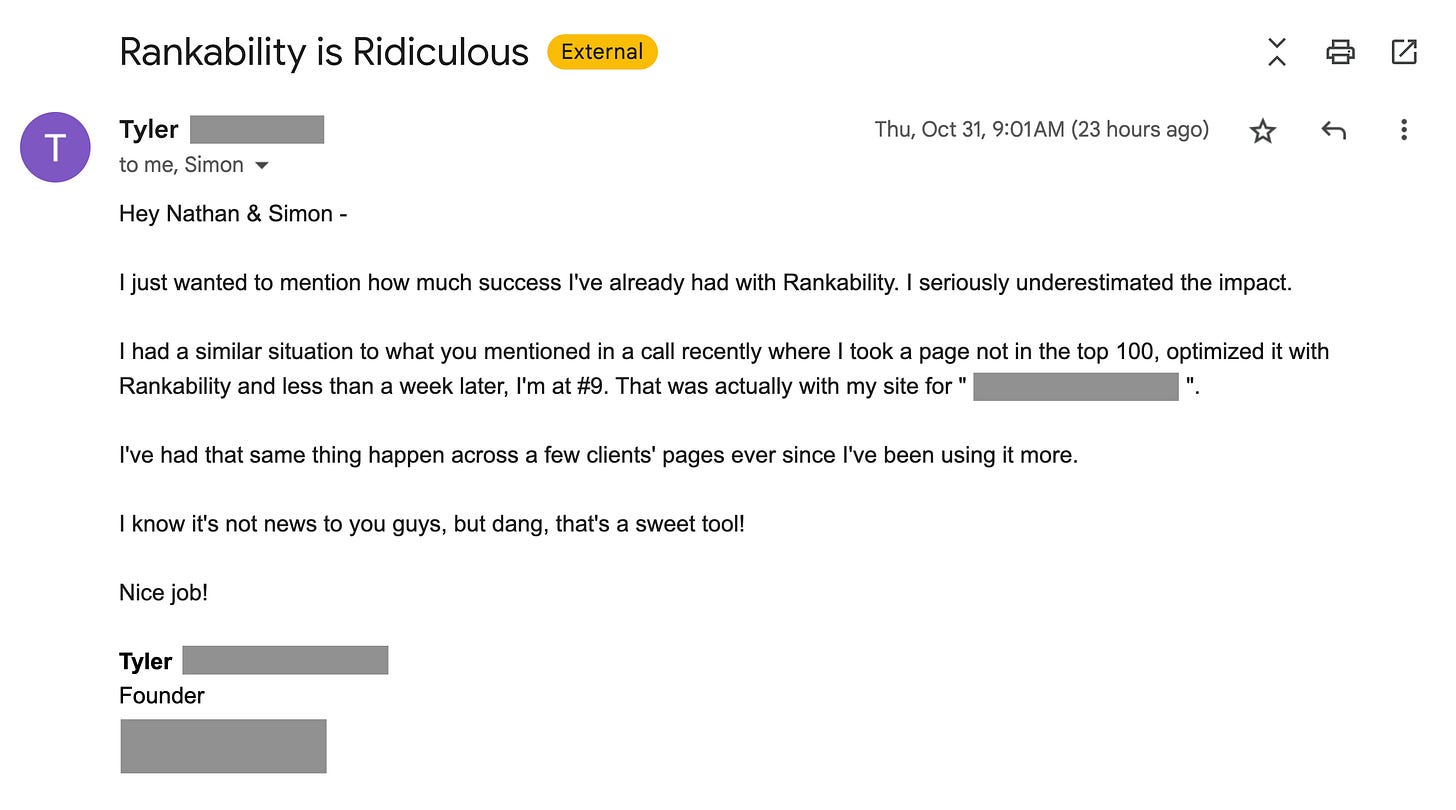
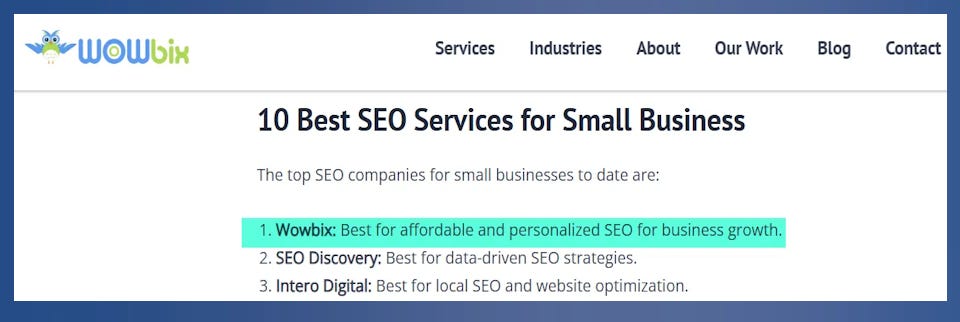
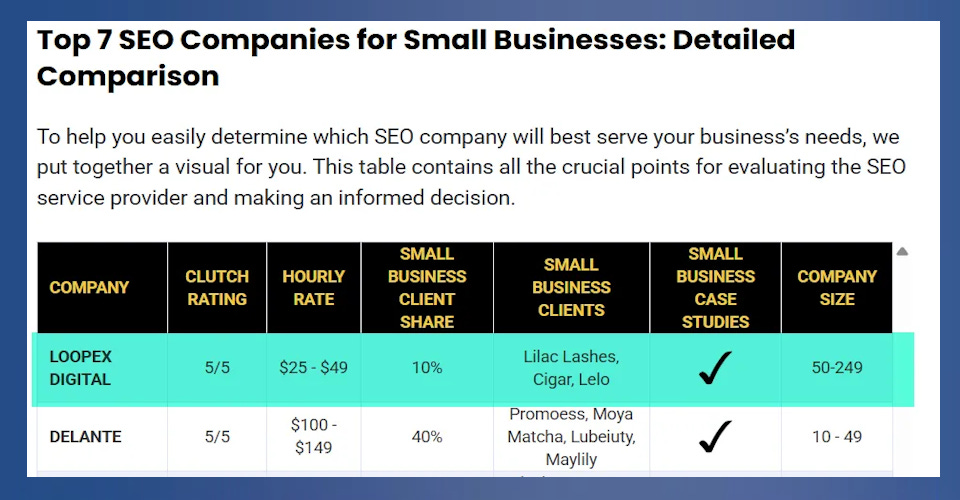


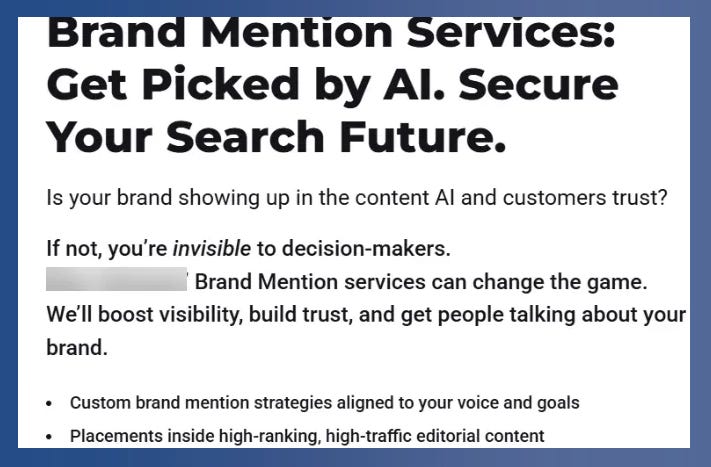
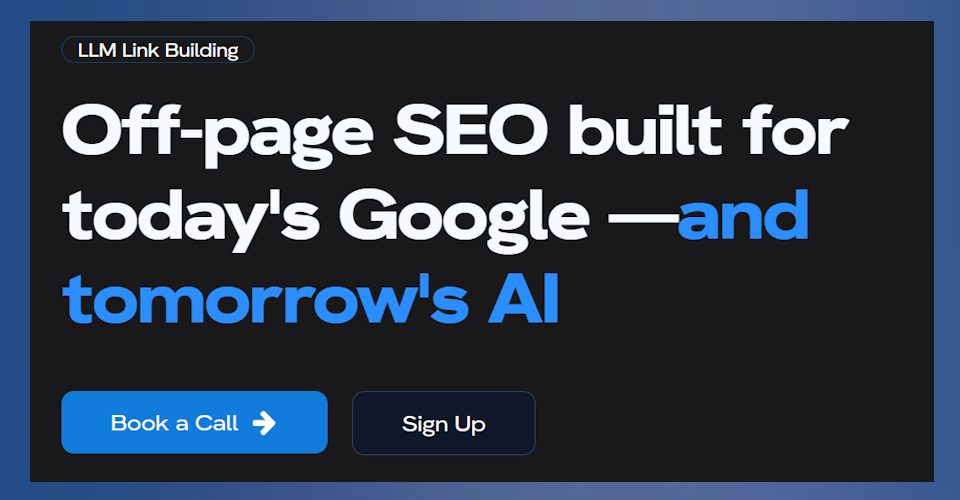
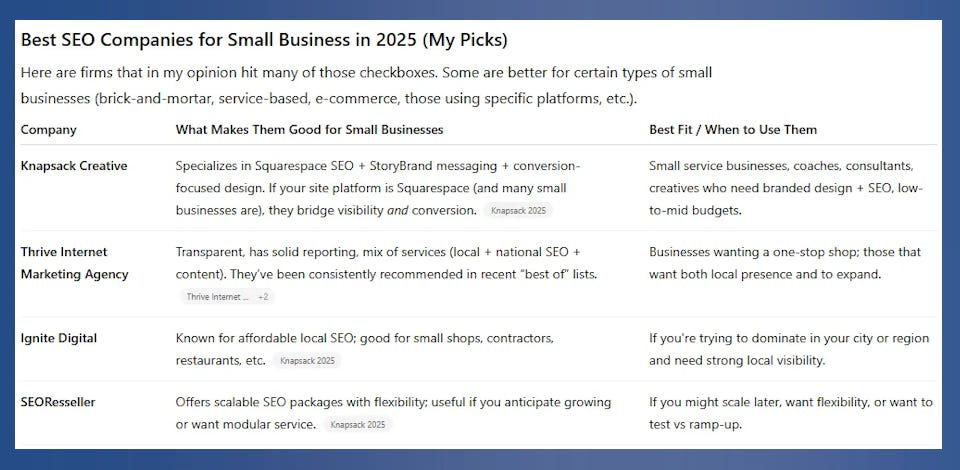
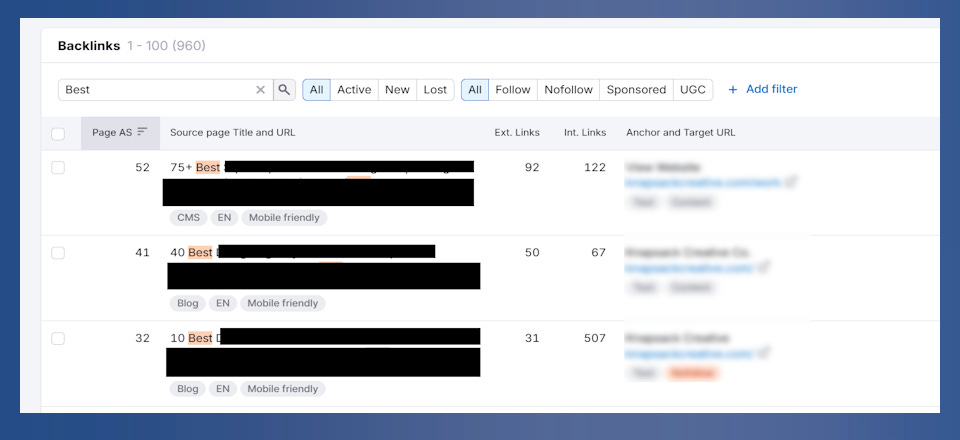
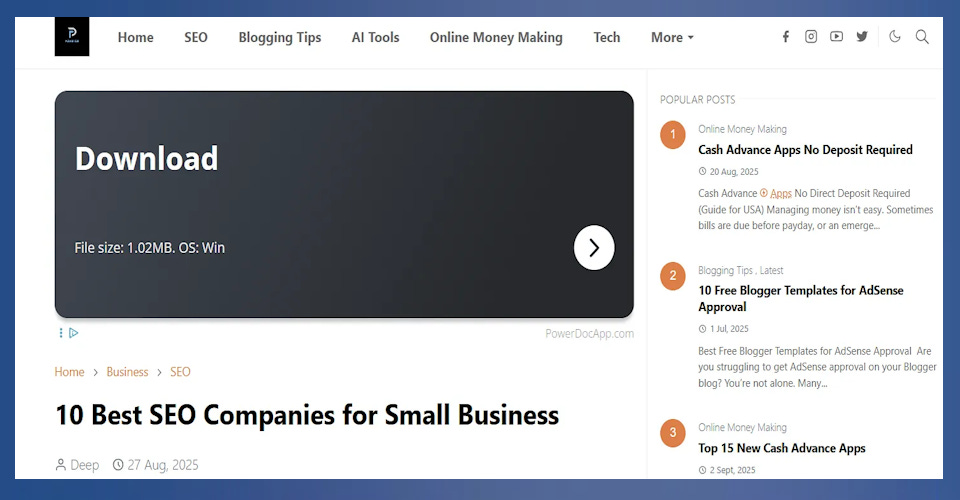


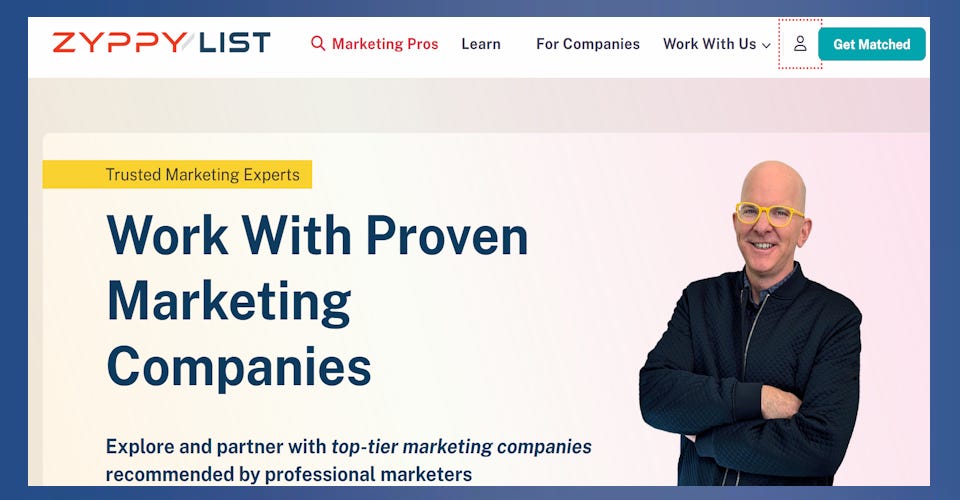
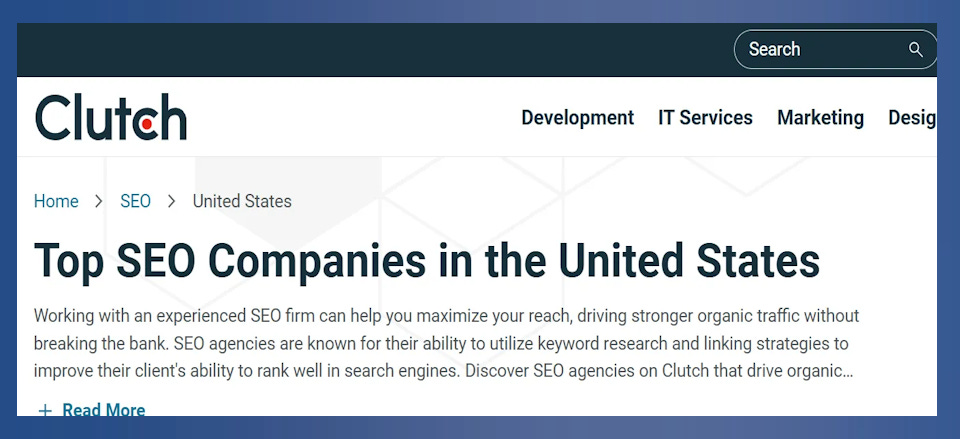
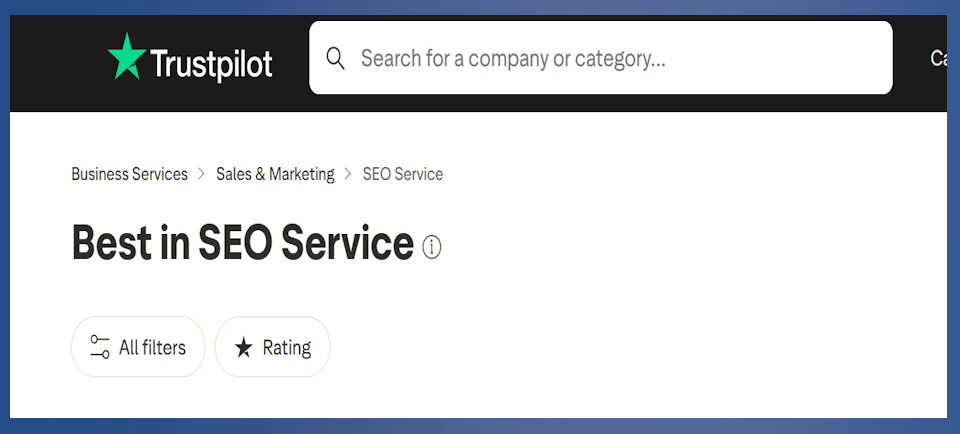
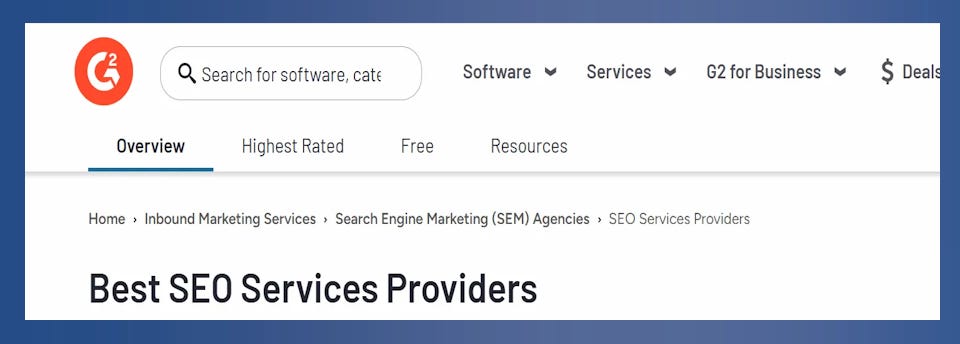
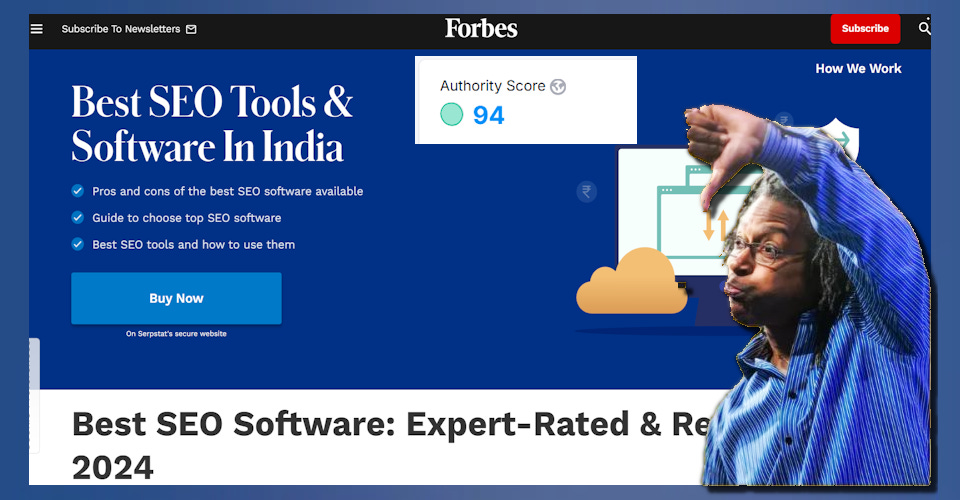
I have also seen a lot of sites writing generic content, creating lots of city pages for a large country having no physical presence except in one city and just changing the city name in the generic text that they have written . They rank just because of their authority over other sites that have lots of useful content to an actual human user
Welcome back to PBNs and white text on white background.